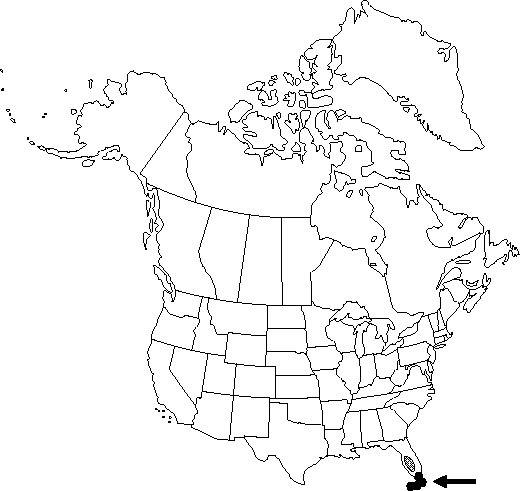Difference between revisions of "Trema lamarckiana"
Mus. Bot. 2: 58. 1856.
Common names: West Indian trema
Endemic
Basionym: Celtis lamarckiana Roemer & Schultes Syst. Veg. 6: 311. 1820
Treatment appears in FNA Volume 3.
imported>Volume Importer |
imported>Volume Importer |
||
| Line 57: | Line 57: | ||
|publication year=1856 | |publication year=1856 | ||
|special status=Endemic | |special status=Endemic | ||
| − | |source xml=https:// | + | |source xml=https://bitbucket.org/aafc-mbb/fna-data-curation/src/2e0870ddd59836b60bcf96646a41e87ea5a5943a/coarse_grained_fna_xml/V3/V3_86.xml |
|genus=Trema | |genus=Trema | ||
|species=Trema lamarckiana | |species=Trema lamarckiana | ||
Latest revision as of 21:51, 5 November 2020
Small trees or shrubs, to 3 m. Bark gray-brown, smooth. Branchlets glabrous to densely pubescent. Leaf blade ovate, mostly 2-4(-6) × 2-2.5(-3) cm, base obtuse to nearly truncate, margins crenate, apex acute; surfaces abaxially and adaxially harshly pubescent with conspicuous pustules; venation prominent, raised abaxially, reticulate. Flowers: calyx pink to white. Fruits pink, 2-2.5 mm diam.
Phenology: Flowering late winter–spring (Mar–Apr), sometimes summer–fall (Jul–Nov).
Habitat: Disturbed areas along margins of woodlands and roadways
Elevation: 0-25 m
Distribution

Fla., West Indies.
Discussion
Trema lamarckiana is endemic to the Florida Keys and West Indies.
Selected References
None.
Lower Taxa
None.